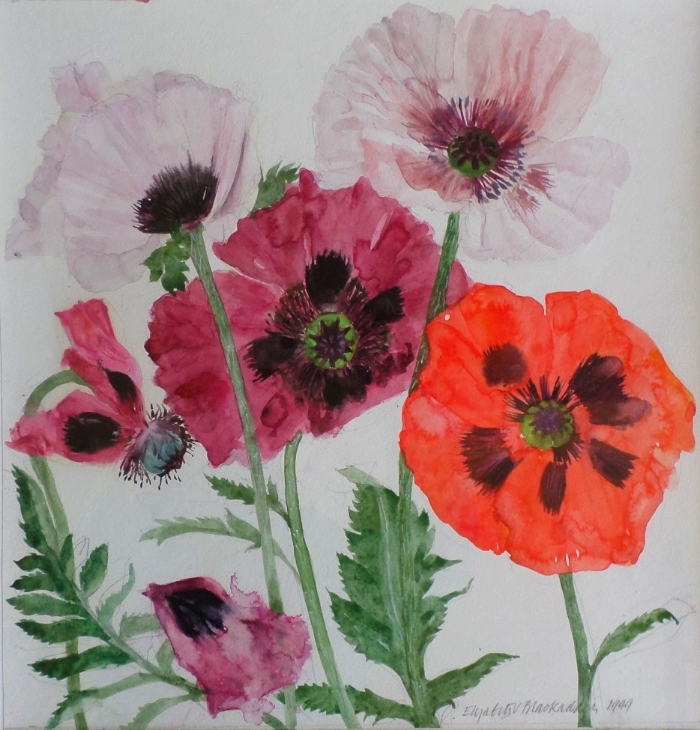Elizabeth Blackadder was a tutor at the Edinburgh College of Art and it was during this time that she introduced a course of Botanical Drawing from plants which were at the Botanical Gardens in Edinburgh. She has a real passion for the flower and her depictions of Iris's, Poppies and Orchid are perhaps her most collected and sought after works.
During her earlier years both John Houston and Elizabeth travelled widely and painted many wonderful landscapes in Scotland, Spain , Portugal, France and Italy - to name but a few of their favourite places. Indeed we, here in Hertfordshire at Blondes Fine Art, have a number of these early works for sale and find their loose form and simplicity particularly engaging. But as fate would have it , it was the poor health of Elizabeth in the late 1970's that resulted in a slight change in direction.
She had always had a love of flowers and she turned once again to their beauty , colour and form using specimens she could source both herself and from the Botanical community in Edinburgh. So it was to be that during much of the 1980's and 90's Elizabeth Blackadder was to produce so many of these much loved and admired watercolours of flowers, many of which were exhibited and sold at The Mercury Gallery in London and Edinburgh.
It is perhaps interesting to examine the structure of these paintings. Blackadder used pencil to outline the form but leaves the background unpainted to give a vibrant white to offset the colour of the flowers. Additionally, it is the paper that she uses - a non absorbent, hot pressed paper, that allows the paint to dry in a way that it retains the strong vibrant colours of the botanical specimen. The result is a riot of colour joined together by the complex structures of the petals and stems to produce a "stand out" watercolour.
I can recall the first time I saw one of these works in a neighbours hallway. A large work purchased directly from the artist, it depicted a group of orchids, and with a number of " real " orchid plants growing in pots nearby to mirror the work, it really showed her ability as arguably the best botanical painter of the 20th century. I know she has continued to produce watercolours of flowers but it is those from the 80's and 90's that are , in our opinion , the best of this genre.
A recent acquisition to our Elizabeth Blackadder collection is a wonderful watercolour of "Oriental Poppies" from the 1990's and interestingly this bears a Mercury Gallery label verso, as did a work of the same subject by her husband John Houston that we sold a few months ago. Both paintings are shown above and show how equally gifted they both were - Elizabeth in watercolour and John in oil.
Blondes Fine Art are always looking to purchase new work by both Elizabeth Blackadder and John Houston so please do contact us if you are looking to sell a work by either artist.












